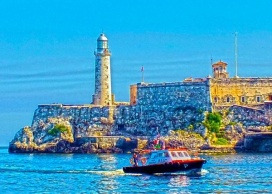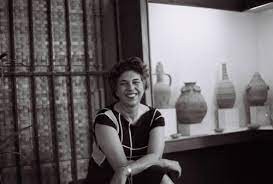
Havana ephemeris. May 29
1911. Lázaro Peña González is born in Havana.

With the passing of his existence, he stood out as a great union leader in Cuba. He came to play, for several years and in different periods, the General Secretary of the Cuban Workers Central.
In 1929 he joined the ranks of the then underground Communist Party and actively participated in the struggle to organize workers against the dictatorship of Gerardo Machado. As early as 1934 he was elected to the position of General Secretary of the Torcedores Union and in that same year he was appointed member of the Executive Committee of the National Workers' Confederation of Cuba. Later he held other responsibilities until in 1939 he was elected General Secretary of the National Confederation of Cuban Workers when said organization was established. He was in that function until 1947 when the Cuban government encouraged the occupation of the workers' organization and that corrupt elements assumed the direction of it in correspondence with the anti-communist policy that he advocated. Some time after the triumph of the Cuban Revolution he returned to direct what was then called the Central de Trabajadores de Cuba. In that responsibility he was until 1965.
Later he attended other tasks in the Central Committee of the Communist Party of Cuba.
In November 1973 he was elected again at the XIII Congress of the Cuban Workers Central Secretary General of that labor organization. He died in Havana several months later, on March 11, 1974.
2000. Rita Longa Aróstegui dies in Havana.

She created more than 400 sculptural works, many of which are distinguished by their Cuban imprint and for having set urban or tourist recreation sites. In this regard, it is worth mentioning the Family Group of the Havana Zoo, popularly known as the Venaditos, the statue of the Virgen del Camino, the muses of the Payret theater, the Tropicana dancer, as well as the sculptures of the Taina village of Guamá.
Also among her best-known works are the famous Gallo de Morón, in Ciego de Ávila, the figures of the Riviera hotel, in Havana, and the Santa Rita de Casia, in the Havana church of the same name.
The group of 17 wooden figures from the Majagua collection that she created after a cyclone knocked down a tree of this type that grew in the patio of her house was described as singularly beautiful.
In 1995 she received the National Prize for Plastic Arts and was also awarded the Replica of the Machete of Generalissimo Máximo Gómez and the Félix Varela Order. First Grade.
She once noted: “People know my work because they have been seeing it for more than 60 years and that is the only reason I give for my popularity. It is time, reiteration, that imposes the work of an artist. It doesn't matter if you remember his name or not. The work is what remains.”
Her birth took place in the Cuban capital on June 14, 1912.